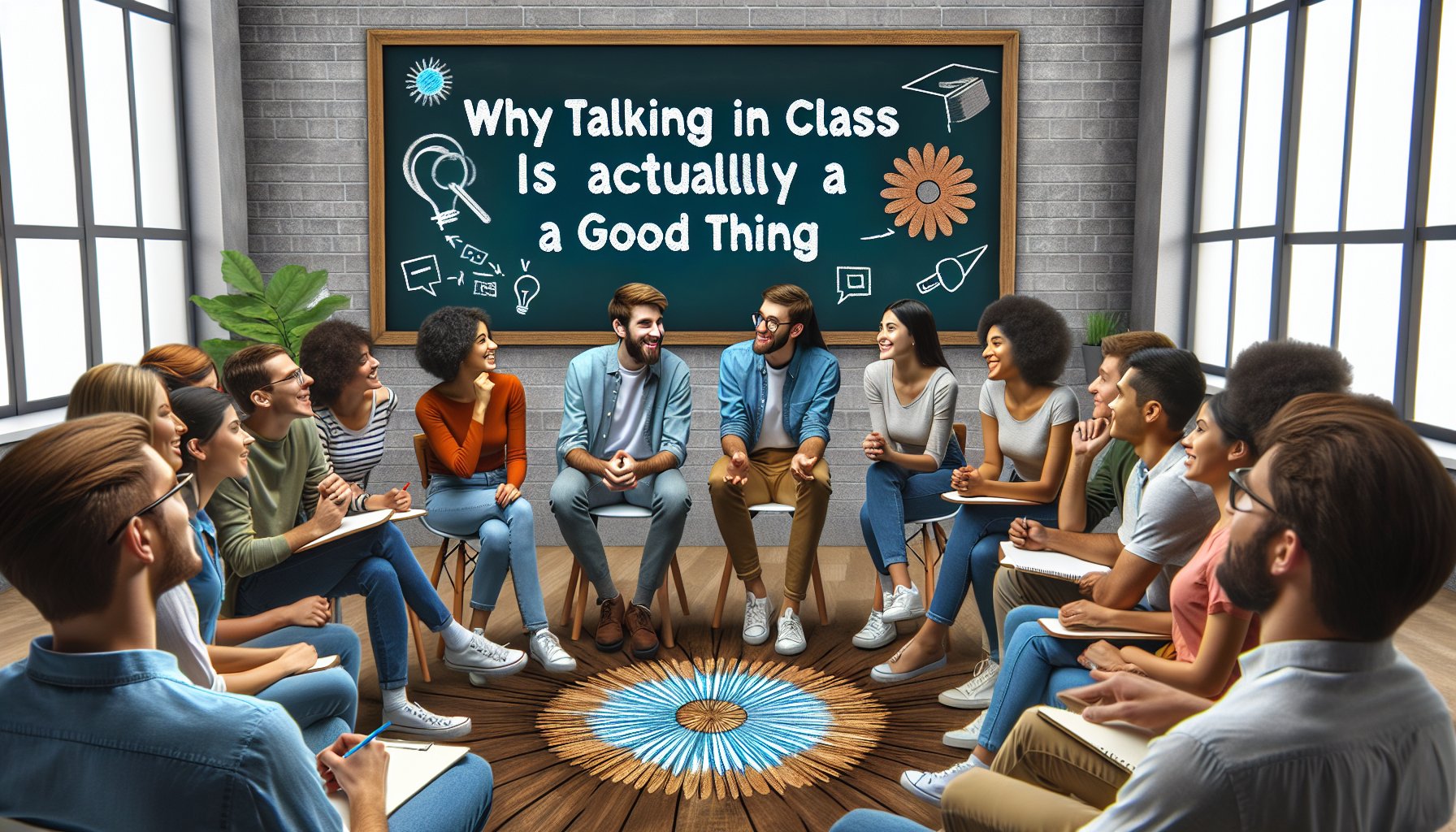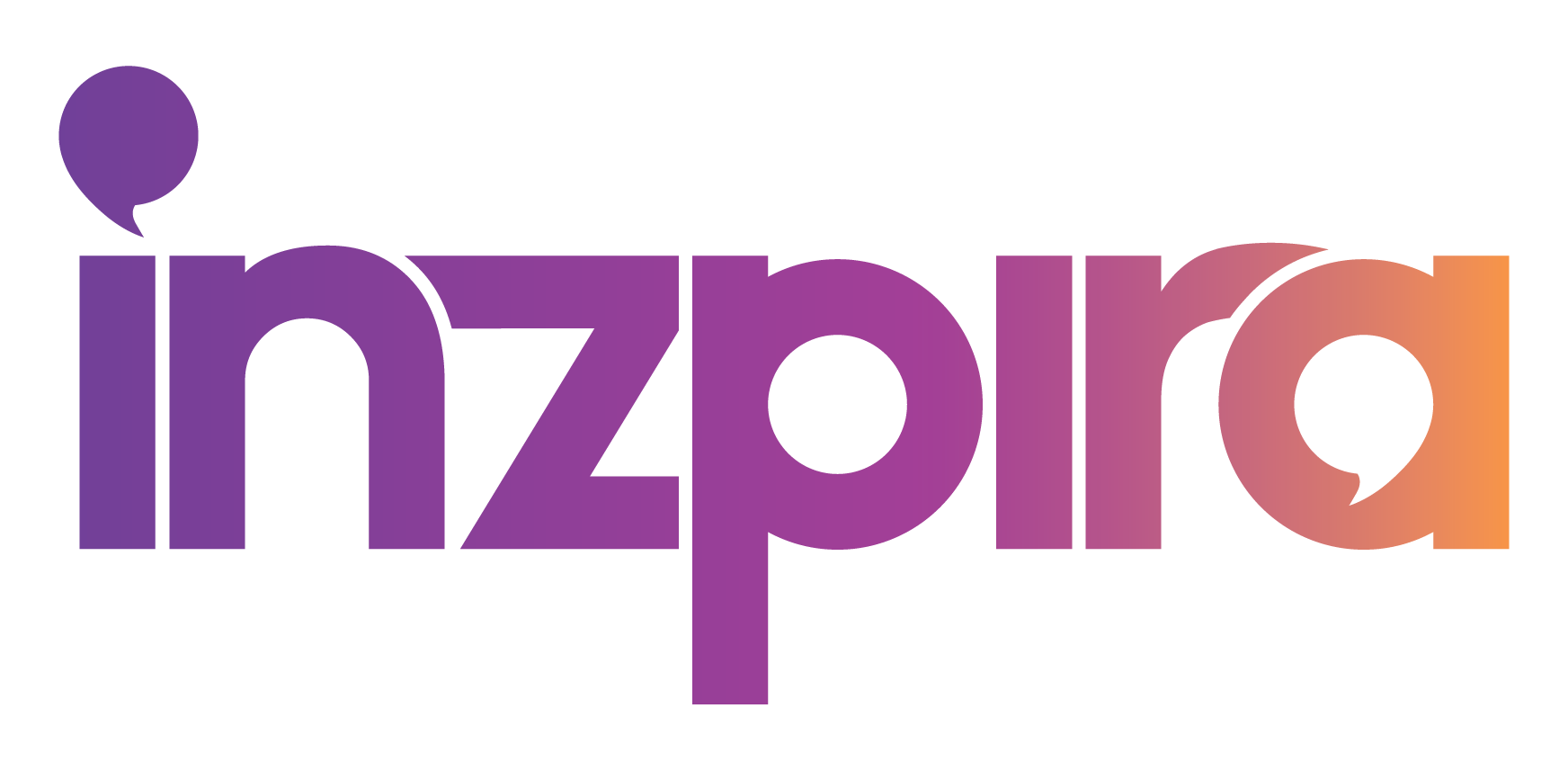Why Talking in Class is Actually a Good Thing: Vygotsky’s Theory on Collaborative Learning
Why Talking in Class is Actually a Good Thing: Vygotsky’s Theory on Collaborative Learning

At the heart of effective education lies the concept of collaborative learning, a transformative approach rooted in Lev Vygotsky’s Social Development Theory. This method leverages the power of group work to enhance critical thinking, engagement, and retention of information. By promoting active learning and peer interactions, collaborative learning not only fosters higher-level thinking and oral communication skills but also nurtures self-management and leadership abilities. It underscores the significance of student-centered learning, where learners are encouraged to rely on each other, navigating through tasks that extend beyond individual capabilities.
As we delve into Vygotsky’s theory and its implications on teaching and student growth, this article will explore the advantages of collaborative learning and provide practical examples of collaborative teaching. From understanding the pivotal role of language in learning to implementing easy methods to foster a more collaborative classroom environment, we aim to illuminate how this approach can significantly impact educational outcomes. Through the lens of cooperative learning, engagement, and the Zone of Proximal Development, we will unlock strategies to achieve an enriched, student-centered learning experience.
Understanding Vygotsky’s Theory of Social Learning
Lev Vygotsky’s Theory of Social Learning provides a comprehensive framework for understanding how children and adults develop cognitive abilities through social interactions. Central to this theory is the belief that learning is inherently a social process, deeply influenced by culture, language, and communal activities. Here’s a closer look at the core aspects of Vygotsky’s theory:
- Stages of Learning:
- Cognitive: Involves mental processes such as thinking, understanding, and remembering.
- Motoric: Pertains to physical movements and the development of motor skills.
- Sociocultural: Learning that occurs within a social context, emphasizing the role of culture and interaction.
- Mechanisms of Learning:
- Social Interaction: Acts as the primary vehicle for cognitive development. Learners engage in discussions, collaborative tasks, and observe others, which fosters their cognitive skills.
- Scaffolding: A strategy where more knowledgeable others provide support to learners at just the right level to help them progress in their understanding.
- Zone of Proximal Development (ZPD): Refers to the difference between what a learner can do without help and what they can achieve with guidance and encouragement from a skilled partner.
- Importance of Language and Community:
- Language: Serves as a critical tool for cognitive development. Vygotsky highlighted how inner speech develops from external social interactions, facilitating the process of thought.
- Community: Learning is deeply embedded within the cultural and social context. The theory underscores the significance of collaborative learning environments where students work together towards common goals.
By integrating these elements, Vygotsky’s theory illuminates the profound impact of social interactions on learning. It challenges educators to create collaborative learning experiences that leverage social dynamics to enhance cognitive development. Through strategies like discourse, modeling, and cooperative learning, educators can effectively support the intellectual growth of learners, making collaborative learning not just a method but a cornerstone of educational practice.
The Science of Talking in Class: How Collaboration Boosts Learning
In the realm of education, the science behind talking in class through collaborative learning reveals a multitude of benefits that extend beyond the traditional lecture-based teaching methods. Various studies have shed light on how collaboration in the classroom can significantly enhance the learning experience:
- Improvement in Knowledge Retention: A study involving second-year medical students at the National Autonomous University of Mexico showcased that students in a collaborative learning environment achieved significantly higher grades compared to those in a non-collaborative setting. This suggests that collaborative learning, through active engagement and peer discussions, aids in cementing knowledge more effectively.
- Enhancement of Higher-Level Thinking Skills: Research in STEM education found that students who engaged in active, collaborative methods were less likely to fail than their counterparts in traditional lecture-based settings. The active participation required in collaborative learning environments fosters critical thinking and problem-solving skills, as students are not just passive recipients of information but active constructors of their knowledge.
- Benefits of Peer-Review Processes: Collaborative learning often involves peer-review sessions, where students assess each other’s work. This not only helps in reinforcing the material learned but also enhances retention through the comprehensive assessment of knowledge. The critique process benefits both the reviewer and the reviewee, making it a powerful tool for learning reinforcement.
Furthermore, collaborative learning introduces several key elements that contribute to its effectiveness:
- Positive Interdependence: The success of collaborative learning hinges on the notion of positive interdependence, where each group member feels motivated to contribute, knowing that the group’s success is dependent on everyone’s participation. This fosters a sense of accountability and encourages students to be more engaged and responsible for their learning.
- Combating Isolation in Remote Learning: Especially relevant in today’s digital age, collaborative learning can mitigate the sense of loneliness and isolation often associated with remote learning. By encouraging interaction and cooperation, students remain engaged, accountable, and more likely to complete their courses.
- Cultivating Essential Skills: Collaborative learning environments are not just about academic achievements; they also play a crucial role in developing interpersonal skills such as communication, problem-solving, and teamwork. These skills are invaluable, preparing students for real-life social and employment situations.
The science of talking in class through collaborative learning showcases its profound impact on not just academic success but also on the holistic development of students. By fostering an environment that promotes engagement, critical thinking, and interpersonal skills, collaborative learning stands out as a superior educational approach that prepares students for the challenges of the 21st century.
Deeper Understanding: Making Knowledge Stick
In the journey towards deeper understanding and making knowledge stick, collaborative learning plays a pivotal role, emphasizing two key benefits that transform the educational landscape:
- Facilitates Comprehension and Memory Retention
- Collaborative learning environments encourage students to engage in discussions, explain concepts to one another, and tackle problems collectively. This active participation helps in breaking down complex ideas into understandable chunks, making it easier for students to grasp concepts and remember details. The act of verbalizing thoughts and questions among peers serves not only to clarify doubts but also to reinforce memory through repetition and the social reinforcement of ideas.
- Collaborative learning environments encourage students to engage in discussions, explain concepts to one another, and tackle problems collectively. This active participation helps in breaking down complex ideas into understandable chunks, making it easier for students to grasp concepts and remember details. The act of verbalizing thoughts and questions among peers serves not only to clarify doubts but also to reinforce memory through repetition and the social reinforcement of ideas.
- Enables Targeted Instruction
- By fostering a collaborative classroom atmosphere, teachers can more effectively gauge where students are in their understanding and tailor their instruction accordingly. This approach allows educators to:
- Focus on specific areas that require further explanation or reinforcement, rather than revisiting every topic in detail.
- Utilize class time more efficiently by addressing common misconceptions and directing attention to areas that benefit the most from group discussion and interaction.
- By fostering a collaborative classroom atmosphere, teachers can more effectively gauge where students are in their understanding and tailor their instruction accordingly. This approach allows educators to:
The synergy between collaborative learning and these educational strategies results in a more dynamic and effective learning experience. By leveraging the collective knowledge and skills of the group, students are not only able to deepen their understanding but also to retain information more effectively. This method of learning, grounded in the exchange of ideas and peer-to-peer teaching, exemplifies the shift towards a more engaged, interactive, and student-centered approach to education. Through this lens, talking in class becomes not just permissible but essential, as it fosters an environment where knowledge is not only acquired but truly understood and remembered.
The Role of Language in Learning
In the context of collaborative learning, language plays a crucial role, acting as the conduit through which knowledge, ideas, and understanding are shared and constructed. Let us explore the multifaceted role of language in learning, emphasizing its importance in fostering effective communication and understanding among students.
- Teaching Listening Skills:
- Eye Contact: Instruct students on the importance of maintaining eye contact during conversations, which signals attention and respect.
- Avoiding Interruptions: Teach students to wait for their turn to speak, promoting a culture of patience and active listening.
- Paraphrasing: Encourage students to paraphrase what they have heard. This not only confirms understanding but also enhances their listening skills.
- Setting Rules of Language and Collaboration:
- Clarifying Issues: Establish a protocol for students to seek clarifications, ensuring everyone is on the same page.
- Constructive Disagreements: Create guidelines for respectfully disagreeing with peers, fostering a safe environment for sharing diverse perspectives.
- Building Upon Others’ Contributions: Encourage students to add to their peers’ ideas, promoting a culture of collaborative enhancement.
Language in collaborative learning serves more than just the purpose of communication; it is used for meaningful engagement with the content, transforming academic exercises into real-world applications. This approach not only prioritizes conversation but also focuses on developing essential listening and speaking skills, ensuring that students are actively engaged in their learning process.
For English Language Learners (ELLs) and Multilingual Learners (MLLs), the Zone of Proximal Development (ZPD) is especially significant. It allows educators to:
- Foster Autonomy: Empower ELLs/MLLs to use their learned knowledge autonomously in new situations.
- Intellectual, Linguistic, and Creative Strengths: The expanded ZPD focuses on leveraging ELLs’/MLLs’ comprehensive strengths, providing a more inclusive and effective approach to language learning.
Through these strategies, the role of language in learning is elevated from mere communication to a pivotal element of collaborative learning, enhancing engagement, understanding, and the application of knowledge in diverse contexts.
The Zone of Proximal Development (ZPD): Learning at Your Best
The Zone of Proximal Development (ZPD) stands as a cornerstone concept in Vygotsky’s theory of learning, highlighting the potential growth achievable through guided interaction. It emphasizes the dynamic range between what learners can achieve independently and what they can accomplish with support. Here’s a closer look at the key elements of ZPD and its practical implications in educational settings:
- Key Elements of ZPD:
- Actual Developmental Level: This refers to the tasks a learner can perform without any assistance, showcasing their current capabilities.
- Potential Developmental Level: Represents what a learner can achieve with guidance from a More Knowledgeable Other (MKO), such as a teacher or a peer.
- Scaffolding: Tailored support provided by the MKO, including resources, tools, and activities, to bridge the gap between the actual and potential developmental levels.
- Role of the More Knowledgeable Other (MKO):
- Facilitator: The MKO serves as a guide, offering just enough assistance to challenge the learner but not so much as to make the task too easy.
- Diverse Forms: MKOs can be teachers, peers, or even digital platforms that possess more expertise in the subject matter than the learner.
- Adaptability: Effective MKOs adjust their level of support based on the learner’s progress, gradually reducing assistance as the learner becomes more proficient.
- Dynamic Nature of ZPD:
- Evolving Construct: As learners acquire new skills and knowledge, their ZPD shifts, reflecting their growing capabilities and changing needs for support.
- Influencing Factors: The learner’s prior knowledge, cultural background, and the nature of social interactions play significant roles in shaping the ZPD.
- Educational Implications: Recognizing the fluidity of ZPD encourages educators to constantly assess and adapt their teaching strategies to meet the evolving needs of their students.
Incorporating the concept of ZPD in educational practices promotes a more personalized and effective learning experience. It underscores the importance of collaborative learning and the pivotal role of social interaction in cognitive development. By leveraging the principles of ZPD, educators can enhance engagement, foster critical thinking, and facilitate deeper understanding, aligning with the overarching goals of collaborative learning.
Easy Ways to Bring Collaborative Learning into Your Classroom
Integrating collaborative learning into your classroom can be a transformative step towards active learning and peer teaching, enhancing engagement and critical thinking among students. Here are practical strategies to effectively implement collaborative learning, keeping in mind the additional instruction for simple language and SEO friendliness to ensure the content is accessible and valuable.
- Flipped Classroom Method:
- Pre-Class: Assign videos or reading materials for students to engage with at home, focusing on the transfer of information.
- In-Class: Dedicate class time to activities, projects, and discussions that encourage application and analysis of the learned material.
- Group Dynamics:
- Deliberate Group Selection: Form groups with a deliberate mix of abilities, diversity, and social capabilities to foster a balanced exchange of ideas.
- Optimal Group Size: Aim for groups of four to five students to maintain enthusiasm and prevent disengagement.
- Assigning Roles: Clearly define roles within groups (leader, recorder, encourager, checker) to ensure each student understands their responsibilities.
- Engagement and Evaluation:
- Clear Goals and Expectations: Set specific objectives for group tasks to guide students and avoid apathy.
- Real-World Problems: Assign tasks that address real-world issues, motivating students to research and form opinions.
- Differentiated Tasks: Ensure tasks are unique to each group to promote importance and reduce competition.
- Individual Evaluation: Assess groups independently to focus on their unique contributions and learning journey.
- Collaborative Activities:
- Warm-Up Games: Use cooperative games to build collaboration skills, especially among younger students.
- Collaborative Learning Strategies: Implement strategies such as think-pair-share, problem-based learning, and jigsaw strategy to encourage active participation.
- Debates and Workshops: Conduct debates to expose students to different perspectives and organize workshops to enhance teamwork skills.
By adopting these strategies, educators can create a classroom environment that not only supports the academic growth of students but also prepares them for real-world challenges through the development of critical thinking, problem-solving, and interpersonal skills. Collaborative learning, when executed with thoughtful planning and clear objectives, becomes a powerful tool in the arsenal of educational methodologies, fostering an engaging, supportive, and dynamic learning atmosphere.
FAQs
1. What advantages does Vygotsky’s theory offer in educational settings? Vygotsky’s theory, particularly the Scaffolding concept, serves as a growth tool in educational settings. It emphasizes the learner’s development through the assistance of a more knowledgeable person. This collaborative effort between a teacher or peers enables students to progress towards autonomous learning.
2. How does Vygotsky describe the role of collaborative learning? Vygotsky refers to the interactive process between learners and their more knowledgeable counterparts as collaborative dialogue. In this process, the learner seeks and internalizes knowledge from the More Knowledgeable Other, applying this new understanding to their own actions. This interaction typically takes place within the learner’s Zone of Proximal Development, where they are capable of achieving more with guidance than alone.
3. What does the collaborative learning theory entail for classroom instruction? The collaborative learning theory in the classroom is centered around students learning from one another, which encourages deeper intellectual engagement. According to this theory, learning in groups can enhance students’ higher-order thinking, oral communication, self-management, and leadership abilities.
4. What are some effective strategies for implementing collaborative learning in the classroom? Effective collaborative learning can be facilitated by the following steps:
- Start by presenting students with a discussion prompt, question, simple problem, or topic.
- Allow individuals to independently think about and formulate a response.
- Have students share and discuss their responses in pairs.
- Let some or all pairs present a summary of their discussions to the entire class.



You make complicated simple! Your best.